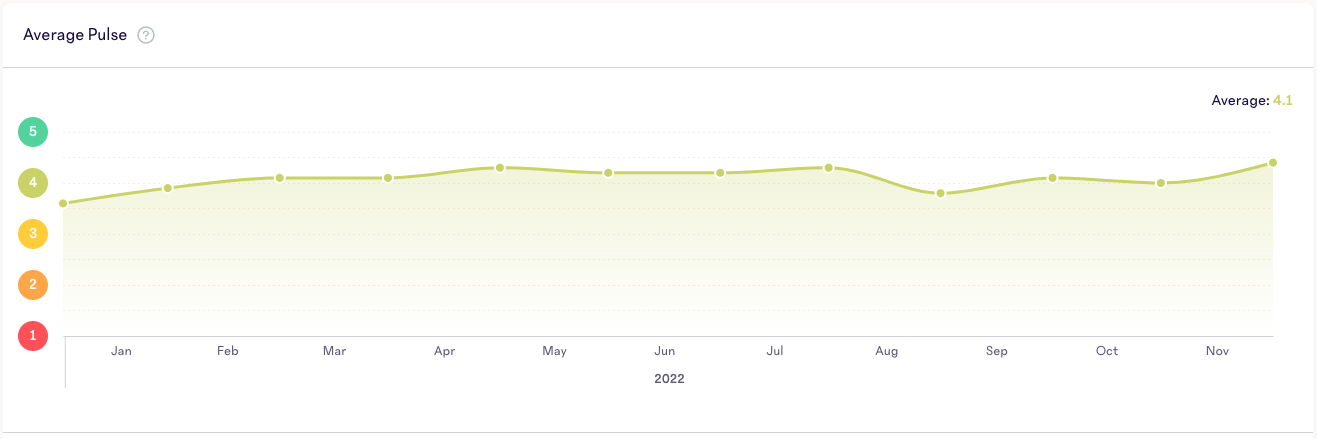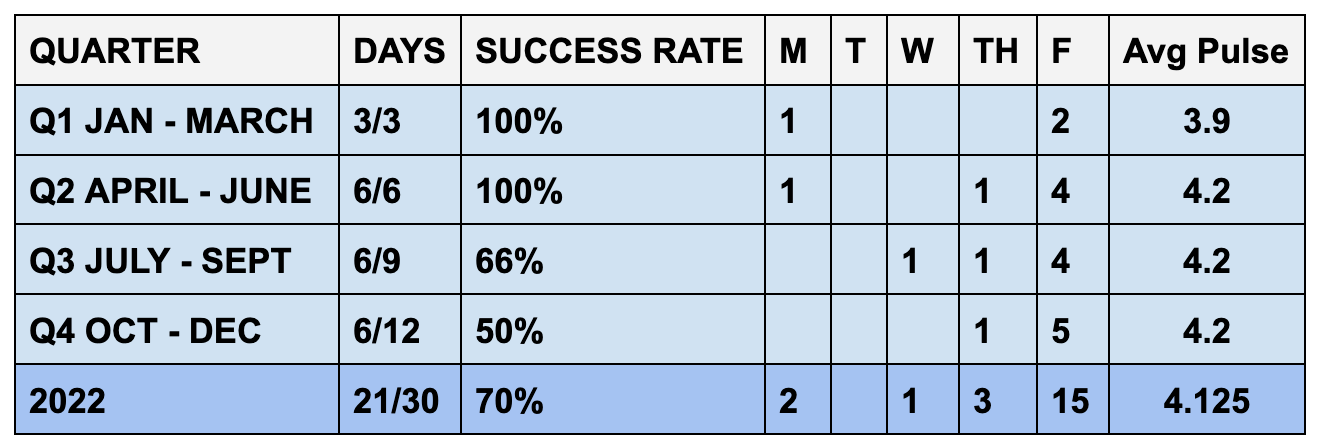Is a 4 day work week possible?
No.
That’s harsh. We got close. Maybe it’s more improbable vs impossible but dash ultimately ran into a handful of obstacles which prevented us from achieving our goal of only working four days a week to finish the year. Before I’ll tell you what worked (and what didn’t) we need to go back to the end of 2021 and talk about what prompted us to pursue this goal.
BURNOUT
Things were a little dicey at the end of 2021. It was late September and we just finished throwing our first Dash Bash which was a huge success, but at what cost? Taxing deadlines with a workload of stylistically-similar projects leading up to the Bash, plus the extra effort to throw an industry festival, and a bit of internal disorganization had folks feeling burned out (and rightfully so). Our staff came to leadership telling us something needed to change, and we’re glad they did.
It was hard. And, in all honesty, it was hard to hear. I thought things were going well and ultimately, that was the problem: leadership wasn’t actually talking to the staff about how they were feeling. Fast forward a few months, and after numerous conversations with the team, we had a plan to try and remedy burnout. It started with a company goal: Purpose and Intention. Since 2020 we’ve strived to have an umbrella goal each year that encompasses all aspects of the studio. In 2020 it was “Be Different” in an effort to find more variety in our work and become more of a generalist studio. 2021 was “Community.” We wanted to be more engaged with the industry on our social channels and outbound initiatives, with a concerted effort to attend more events and to throw one of our own: the Dash Bash.
Image from the 2021 Dash Bash. From left to right: Sarah Beth Morgan, Taylor Yontz , & Rebekah Hamilton.
Our 2022 goal of purpose and intention was all about organization in an effort to put more emphasis on what really mattered, and why we have found success thus far, our people. Purpose and intention for each department looked like this:
Creative - Increase quality and capabilities
Operations - New systems built for scale and efficiency
Sales - Start an outbound program and send 500 emails to industries we want to pursue
HR - Develop a system tailored towards scaling remotely
Marketing - Gain 8K followers on instagram and achieve a 5% increase in engagement
Developing company goals, individual goals, and how to achieve them should have its own blog post, so what I specifically want to talk about is how we tracked employee satisfaction to determine what changes to make using a HR platform called 15Five (which I can’t recommend it enough). We tracked three things each week:
How creatively fulfilling did you feel like your projects were this week?
How organized were those projects this week?
What's your weekly pulse?
The first question ensured no one spent too much time working on the same type of video. It encouraged project rotation, and if scores were low, we would create studio projects to fill creative gaps so people were excited about their work.
The second question ensured people always had what they needed to complete their work. Low scores were usually the result of rushed creative briefs, no assets, lack of direction, or timeline confusion - something we could, and should, easily fix.
Finally, the weekly pulse question asked staff to score how they were feeling that week on a scale of one to five. Five being an amazing week, one being terrible. From an individual standpoint, we could move people around on projects or suggest time off if they consistently had low scores. Looking at the aggregate, we could quickly identify when we should invest in a staff project or give everyone a break with a mental health day.
MENTAL HEALTH DAYS
It’s hard to be creative on demand. Some days are easy and other days feel like a slog. So while project rotation and group creative projects help with burnout, that alone isn’t enough. After these internal conversations I came across an article titled “Mental Health Days Are Important. Here’s How to Make Yours Worthwhile.” The article simply interviews people on what they do with a day off but it stuck with me. What if, instead of just having a mental health day from time to time, we bake it into our schedule? What if we had a mental health day each month? Hell, what if we had one each week!
The coveted four day work week.
I wondered if it was even possible. Working in an industry like ours that’s driven by a myriad of clients working on incredibly short timelines, it just didn’t seem realistic. But why not try it? We’re tracking everything else already, let’s see if it has an impact on burnout. So we came up with a plan. Rather than jumping straight into the deep end we’d start with one day off each month for the first quarter and progressively add one more day each quarter until we hit the four day work week in December. If it worked, we’d establish a long-term permanent plan to keep it going beyond this trial.
We did set up some ground rules with the staff so we were all on the same page.
First, we had to define what a mental health day was. For dash, that meant the entire studio takes the day off all at once; not different days for different people at different times.
Second, the days were not planned ahead of time. This gave our producers flexibility to fit in tight schedules, deliverables, or client calls when needed. As a result, sometimes they were not announced until the day before.
Third, if pinched, we would include our existing holidays as a mental health day for that month.
Lastly, this was a trial. At any point, if we felt like this endeavor was unsustainable we could call it off or reduce the number of days off for that quarter.
As you could imagine, everyone was really excited about the idea. Here is how it all panned out…
RESULTS
Seventeen of the twenty-one Mental Health days, or 81%, were taken on a Monday or Friday resulting in a three day weekend. That means 32% of the weekends in 2022 were three day weekends for the dash staff.
We took 21 days off as a studio this year and still had one of the most profitable years we’ve ever had as a company.
While pulse scores leveled out after the first part of the year, creatively fulfilling scores continued to rise along with the organizational scores. I surmise that it’s easier to be fulfilled with your work if you’re not feeling as burned out so I think the two are correlated.
Q1 mental health days were easy to achieve and we never ran into any client or production hurdles.
Q2 was an overall success but it offered the first client interference. With tight timelines, there were a couple of occasions where we needed to meet with stakeholders during a scheduled Mental Health day. While the staff was able to take off, myself or someone from the leadership team still needed to be available to take some meetings. Less of an issue with a team of thirteen, but I could easily see problems occurring at scale.
Q3 was tough. July through September is historically a busy time for dash and that trend continued in 2022 which is one of the reasons why it was hard to add that third day. This was also the first quarter where some staff expressed concern over the time they had to complete a task since we were taking away production days for the Mental Health days. That said, we were still able to achieve 66% with four of those days happening on a Friday.
Heading into Q4 we made the decision not to move forward with the four day work week and instead pull back to the Q2 allotment of two days a month. Based on that number it was a success but if you’re looking through the lens of four days off a month, we missed the mark.
Did we attain the four day work week? No. But did we move the needle in the right direction? Absolutely. Based on the success of our trial this year, we’re excited to make Mental Health days a staple at dash; offering staff at least two days off a month for the entire year. Have you experimented with mental health days or a four day work week? I’d love to hear your thoughts.





